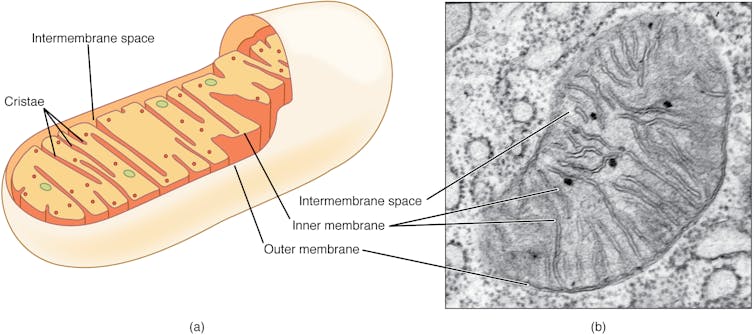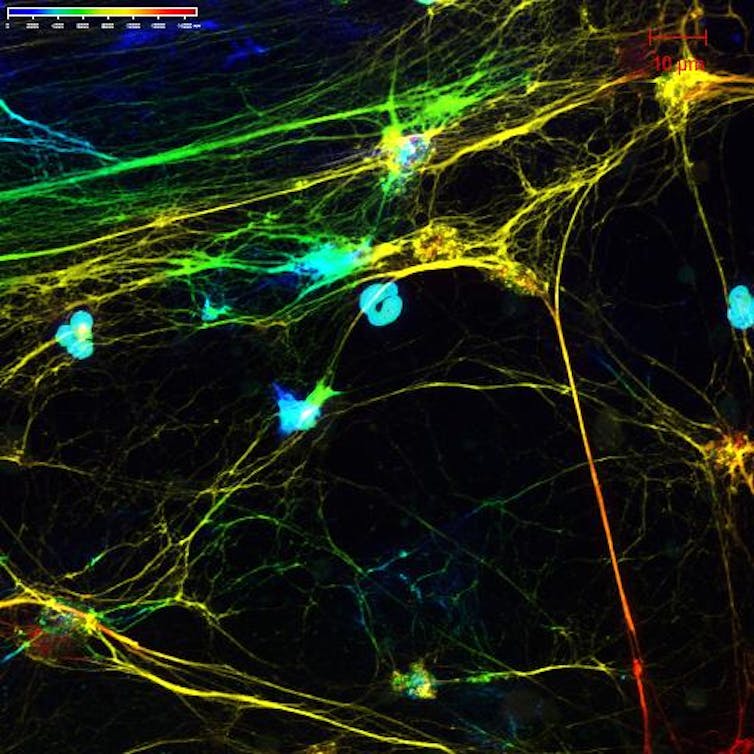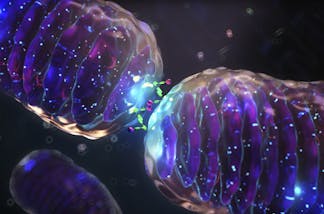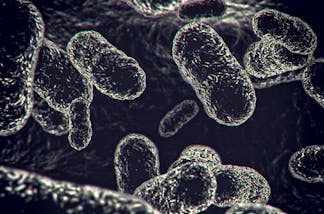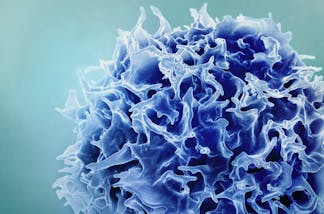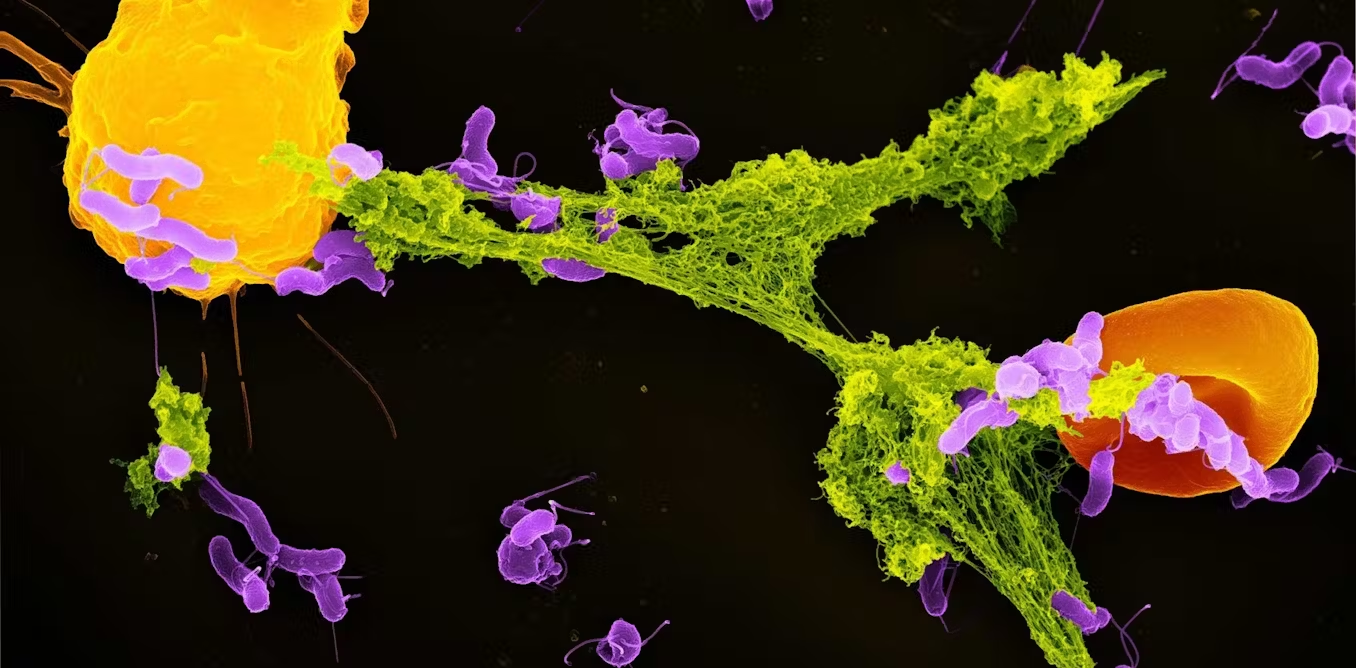 Neutrophils (yellow) eject a NET (green) to ensnare bacteria (purple). Other cells, such as red blood cells (orange), may also get trapped. CHDENK/Wikimedia Commons, CC BY-SA –
Neutrophils (yellow) eject a NET (green) to ensnare bacteria (purple). Other cells, such as red blood cells (orange), may also get trapped. CHDENK/Wikimedia Commons, CC BY-SA –
Helping you understand the news
When complicated stories are in the news, The Conversation is especially relevant. Our editors specialize in finding experts and helping them write articles explaining the key concepts clearly, but always accurately, based on years or decades of study.
The future of AI is a perfect example of this. There’s been a lot of facile analysis in the media from pundits who either position it as the greatest advancement of all time or posit horror stories about it running amok. But readers of The Conversation have benefitted from thoughtful analysis and research from dozens of experts, from disciplines ranging from information retrieval to ethics, law, education to art.
If you give today, we’ll send you two e-books. The first compiles seven of our most insightful articles on the future of work, ranging across topics from the impact of generative AI to how workers are taking more control over their work lives. The second brings together articles on the wisdom of ancient texts.
It’s our way of thanking the readers who make what we do possible, and it will enable us to continue toprovide this trustworthy journalism for free to readers around the world.
Thank you.
–
Want to write?
Write an article and join a growing community of more than 206,200 academics and researchers from 5,239 institutions.









